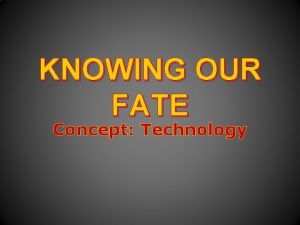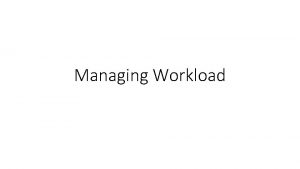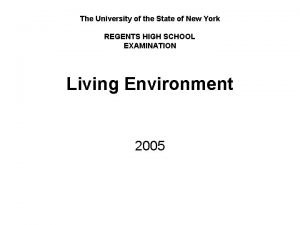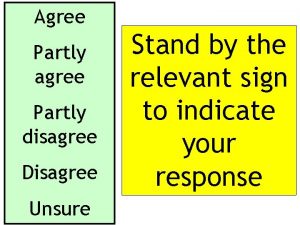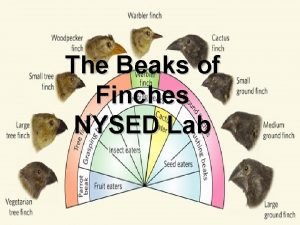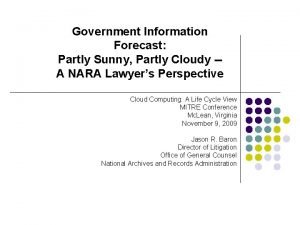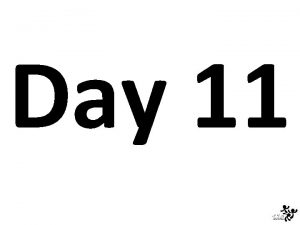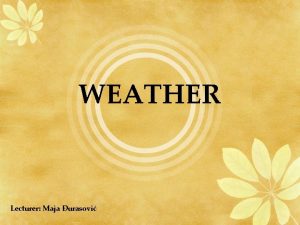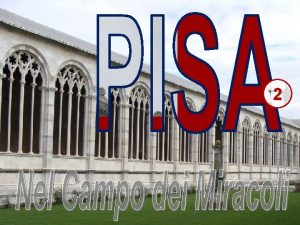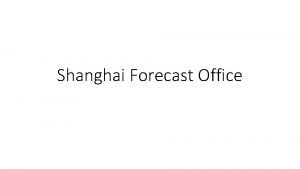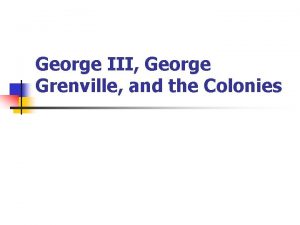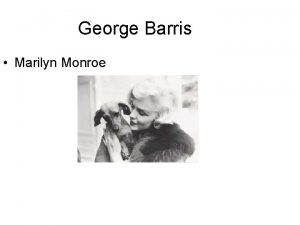The Forecast for Tomorrow Partly Cloudy George O



















- Slides: 19

The Forecast for Tomorrow: Partly Cloudy George O. Strawn Director of the National Coordination Office for Networking and IT Research and Development U. S. Office of Science and Technology Policy

Outline • • Caveat lector The three IT waves The three cloud services Clouds in the Academy Clouds in the U. S. Government Caveat emptor Cloudy crystal ball Conclusions

Caveat Lector • We IT folks have been known to “occasionally oversell’ our new products and services (eg, we often sell them prematurely and sometimes mistakenly) • The opinions expressed below are those of the speaker, not the U. S. Government

But clouds are a hot topic… For example, in the May 2010 issue of the Communications of the ACM: • “Cloud Computing and Developing Nations” • “Cloud Computing and Electricity: Beyond the Utility Model” • “Why Cloud Computing Will Never Be Free”

The First Two “Computing Waves” 1. Mainframe computers – Initially batch: carry punched cards to the computer center; carry away printed listings – Then timesharing: interact with the computer at a terminal, but your software and data were still on the mainframe 2. Personal computers (PCs) – Initially stand-alone: your software and data were on your PC – Then local area network (LAN): your software and data on the LAN “server” as well as on your PC (client-server computing)

Precursor to a Third Wave The Internet is to the Cloud as the chip is to the PC (a sine qua non) • • • First, the Internet was “loosely connected” to the PC and the LAN—your software and data were still on the PC and LAN server The Internet was initially used to login to remote computers, to download information from them, and to send and receive email Then “browser” software made access to WWW information into a/the killer app

The Third Wave? 3. Cloud computing is • where PC (and smartphone!) are “tightly connected” to the Internet: i. e. , all of your software (except for a browser) and all of your data are on a “server in the sky” (that would be the Cloud) • “Outsourcing via the Internet” It is possible that Cloud computing could do to PC computing what PC computing did to mainframe computing (ie, push it into the background)

The S&T behind the Clouds • Computer science creates scalable systems (things that can grow big and still operate efficiently) • These scalable systems are often quite complex, so computer science then figures out how to hide the complexity • Scalable, hidden complexity enables the cloud infrastructure—Internet, WWW, server farms, data base management, etc

Three (classes of) Cloud Services • Software as a Service (Saa. S) • Platform as a Service (Paa. S) • Infrastructure as a Service (Iss. S)

Software as a Service (Saa. S) • Salesforce. com made Saa. S a business • Eg, Gmail and Google Apps (email, word processor, spread sheet, presentation) are “free” productivity applications • Saa. S can enable (small) organizations to have IT applications with no IT infrastructure (except for PCs with browsers and Internet connections) and no (minimal) IT personnel

Platform as a Service (Paa. S) • Eg, Google. Apps Engine: opening up the software development environment that Google used to create Google Apps • Paa. S will lower the barriers to entry for software developers of Saa. S products • Perhaps Paa. S will do for Saa. S what i. Phone Apps developers have done for the i. Phone

Infrastructure as a Service (Iaa. S) • Eg, Amazon. com storage and computing services • Iaa. S can provide flexibility for organizations with existing IT shops that have highly variable demands on their services Some organizations are creating “private clouds” to serve the needs of their divisions (for Saa. S and Iaa. S services, at present)

Cloud info from selected vendors: • Google--Saa. S http: //www. google. com/apps/intl/en/business/index. html • Microsoft--Saa. S http: //www. microsoft. com/cloud/default. aspx • Google--Paa. S http: //code. google. com/appengine/ • Amazon--Iaa. S http: //aws. amazon. com/ec 2/ http: //aws. amazon. com/s 3/

What about security and privacy? • The thought of having your data and software outside of the organization is slowing down acceptance of clouds • We are used to having our money outside our organizations, and it works unless the bank fails… • Ultimately, cloud providers will be able to do a better job of providing IT security and privacy (imho)

Clouds in the Academy • Universities and colleges have been early adopters of Saa. S clouds for student email and desktops (may be approaching 50%) • Some schools have extended cloud email such as Gmail to faculty and staff • One estimate concluded that 80% of university research applications could be performed “on the cloud”

Clouds in the U. S. Government • The current CIO of the Federal government was previously the CIO of the District of Columbia where he implemented Cloud Computing • We are in the middle of an initiative to do likewise in the Federal government, but it is a much bigger undertaking by a much more conservative group of agencies

Cloud 1. 0—caveat emptor “Perfect competition”? (think cell phones) • Artificial differentiation through advertising • Obscuring pricing by complexity and hidden fees • Obfuscation of product specifications • Cutting corners in product value delivery • Locking into long-term commitments

Cloud 2. 0: in the crystal ball To replace the corporate data center, the Cloud will have to provide for • Very high service levels • Methodological solutions • Automatically scalable infrastructure • Automatic disaster recovery • Minimal staffing • Power savings

Conclusions • Remember: “Predictions are hard, especially about the future” (Yogi) • Clouds may be not only the third wave of computing, but also the first wave of the industrialization of computing • Clouds may be one of the information technologies that help to turn the data tsunami into a data cornucopia
 Partly glazed partly panelled door
Partly glazed partly panelled door Shakespeare tomorrow and tomorrow and tomorrow
Shakespeare tomorrow and tomorrow and tomorrow Tomorrow and tomorrow and tomorrow kurt vonnegut analysis
Tomorrow and tomorrow and tomorrow kurt vonnegut analysis Due tomorrow do tomorrow
Due tomorrow do tomorrow Due tomorrow do tomorrow
Due tomorrow do tomorrow Galapagos finches evolved partly due to
Galapagos finches evolved partly due to Parallel development processes are universally endorsed.
Parallel development processes are universally endorsed. Galapagos finches evolved partly due to
Galapagos finches evolved partly due to Partly disagree
Partly disagree Beaks of finches diagram
Beaks of finches diagram George washington vs king george iii venn diagram
George washington vs king george iii venn diagram George washington vs king george iii venn diagram
George washington vs king george iii venn diagram Phosphaturia cloudy urine
Phosphaturia cloudy urine Cloudy sprinkler rain wet grass
Cloudy sprinkler rain wet grass Sunny rainy windy snowy
Sunny rainy windy snowy Cloudy mixture with particles that move erratically
Cloudy mixture with particles that move erratically Grey cloudy discharge
Grey cloudy discharge Cloudy pee
Cloudy pee Weather sunny rainy cloudy windy stormy
Weather sunny rainy cloudy windy stormy Chlamydia
Chlamydia


